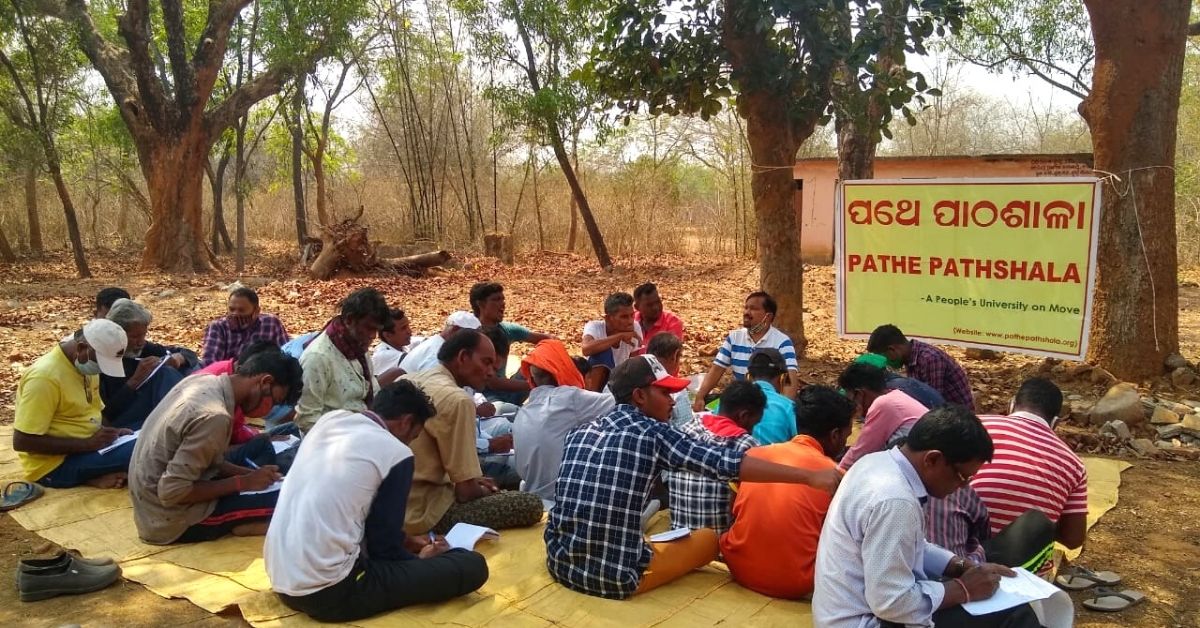The year was November 2008, and Dr Balaram Sahu, a veterinary doctor with the Odisha government, was presiding over a training workshop for the rural population of Bhubaneswar. The workshop was being held to provide training to farmers in identifying and treating common diseases in cattle.
At this event, Dr Balaram noticed something peculiar. Among the 40 attendees at the workshop, there was only one woman.
“In rural areas, women play a significant role in farming activity, but somehow, their attendance at workshops like these is bleak. This worried me. She told me that many women in her village wanted to attend the workshop, but could not step out due to domestic responsibilities, such as taking care of the elderly and children as well as managing house chores. ” Dr Balaram tells The Better India.
This problem was not limited to just one village. “Many farmers need such information to earn livelihood, but cannot access it due to personal constraints. Making a trip from the village to the city is also expensive for them. Moreover, the terminology used and the training imparted are often in English, and very few can understand the lessons due to language barriers,” he adds.
So he decided to take these lessons to those who could not come to him.

Over the past 13 years, Dr Balaram has reached at least one lakh people across all the districts of Odisha, organising lectures on 50-odd cattle diseases under the initiative Pathe Pathshala, a moving classroom. He conducts these lessons by going to each village, talks in the local language, and holds them as per the villagers’ convenience and in areas where they are comfortable.
With music as his medium
Since 2008, he has been sparing time on weekends as well as government and festive holidays, to help villagers build their knowledge of treating cattle diseases.
He recalls that initially, approaching them was challenging. “They were sceptical about why a doctor living in a city wanted to visit a village and offer free knowledge. The locals had doubts on how helpful or practical the remedies would be and if there was any hidden intention behind the move,” he says.
To remove these fears and doubts, he approached the villagers in community spaces and common areas. “I started with casual discussions about the health of their cattle. I did not build a stage or put up big posters announcing the workshop. I had no external financial support from a private organisation or an NGO. I went alone, talked with the villagers with humility and sat alongside them,” he explains.
Explaining how he conducts these sessions, Dr Balaram says, “There are about 40-50 ailments such as fever, cough, gas and Foot and Mouth Disease (FMD), among others, that are reported commonly in cows, buffaloes and other cattle like goats. Sometimes, farmers have to deal with infections as a result of cattle injuries. I tell them how to identify the symptoms and what traditional remedies they can take,” he says.

He adds that a healthy diet and fodder can prevent many illnesses. “I suggest what value additions can be made in the cattle feed, as well as other low-cost solutions to improve the health of animals,” Dr Balaram says.
Sharing an incident at Rairakhol village in 2010, Dr Balaram says, “I was offering an hour-long session. About 20 locals were present when I began speaking, but the crowd swelled through the day. By the evening, there were 200 attendees. They had several questions and doubts, and the discussions went on and on. When I left the village, it was 9 pm. Such was the positive response from the residents,” he says.
Dr Balaram also speaks in local languages such as Odia, Bengali and Hindi, which helps locals accept him more easily. “These languages are easy to understand and learn,” he says, adding, “I recite poems or sing songs in local languages for women, which helps them remember the points, as not everyone can read and write. There is a song for every disease. Memorising songs is convenient in the absence of a notebook and text,” he adds.
As farmers began seeing the benefits of his work, word spread across various districts, and requests for more sessions started pouring in.
So far, Dr Balaram has held 1,061 classes reaching 25,000 families, and has expanded his reach to other states such as Jharkhand, Bihar, Rajasthan, Punjab and Gujarat. His work also received recognition from the Central government in 2011, who conferred upon him a National Award in Science and Technology Communication by the Department of Science and Technology (DST), acknowledging his outstanding and innovative techniques for communicating science and technology for the grass-root level.
A mission for life

Prasanna Malla, farmer from Shankarpur village in Kendrapara district says, “Dr Balaram sir’s suggestions have proven so helpful that residents have been demanding more lectures. His teachings are effective as he provides real demonstrations about how to make fodder and treat cattle diseases. His guidance has helped us improve the health of our cattle and keep illnesses at bay,” he adds.
Meanwhile, while COVID-19 has restricted travel and frequent visits, Dr Balaram continues to hold sessions online for those who ask.
In recent years, he has also started creating young trainers in each village he visits. “There are many school dropouts and unemployed youth who have no immediate job prospects. I teach them how to diagnose basic diseases and help other villagers treat their cattle for a fee. In this manner, the youth can earn a living with dignity,” he says.
Dr Balaram retired from his government job in 2020 but continues to help the farmers. “I am also a son of a farmer and understand the hardships the community faces. It is my way of showing them my gratitude, and I will continue to do so as long as possible,” he adds.
Edited By Divya Sethu
No comments:
Post a Comment